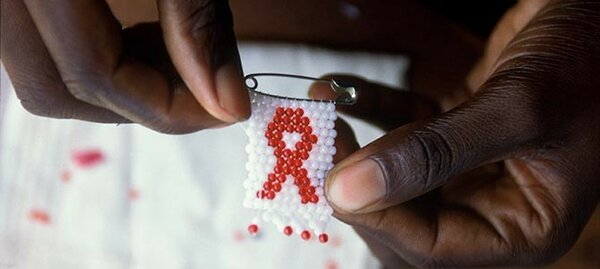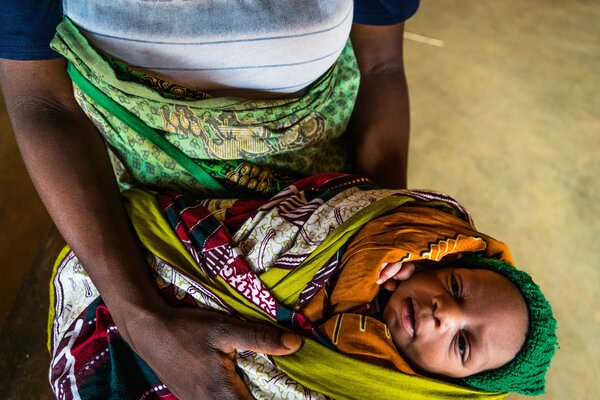Breaking the backbone of a pandemic

The land, thirsty for water that never comes, cracks open. Dust coats the fields, suffocating the wilted crops still stubbornly trying to survive. Somewhere nearby, life is beginning. A woman is pregnant, and a complex network of cells fueled by oxygen and nutrients — and carried by blood — is growing.
Now it is lean season — the time between planting and harvest when food runs out. Now three months have passed.
The rains come to southern Africa but not before 15 million people across six countries will need urgent food aid. By the year's end, drought will inflict havoc again on four of these same countries, while in the east, parts of the Horn of Africa are on famine- watch. But it is not 1984, and famine does not materialize. Poverty and disease stalk southern Africa. HIV/AIDS leaves a devastating wake.
This is what 2003 looked like. A child born then would be 15 years old today.
The human immune system is made up of cells and organs that protect the body from infection. A fetus acquires these building blocks while in the womb, but birth, breast milk and exposure to bacteria and viruses are the keys to building up that resistance. An immune system takes time to develop.
The HIV virus attacks this very system, weakening the body's ability to ward off antigens and making it rife for infections and disease. In its most advanced stage, it is called AIDS.


There has been progress against the pandemic. Of the estimated 37 million people in the world living with HIV/AIDS today, 21.7 million have access to antiretroviral therapy (ART) — medicine that helps slow down the virus. New HIV infections have been reduced by 47 percent since 1996 when the rate of transmission hit its peak.
But two million people between the ages of 15 and 19 are living with HIV/AIDS — a sharp, 30 percent increase since 2005.
So then how do you explain what is happening to young people?
"Young people are vulnerable to HIV at two stages of their lives," explains Annmarie Isler, an HIV/AIDS, Programme Policy Manager at the World Food Programme (WFP). "Early in the first decade of life when it can be transmitted from mother to child or what is known as vertical transmission, and the second, when adolescence brings a host of new vulnerability."
The majority of adolescents living with HIV acquired the virus through birth. "Programmes to prevent mother-to-child transmission have been successful in recent years, but reducing new infections has been more difficult," says Isler.
The global numbers speak for themselves: in 2016, there were 260,000 new infections among adolescents. In 2017, approximately 7,500 young women contracted the virus on a weekly basis.
Isler elaborates, and the picture becomes clearer: "Young women are more than twice as likely to acquire HIV as young men. In some regions, the difference between genders is particularly stark. In some parts of sub-Saharan Africa, for example, young women are up to eight times more vulnerable to HIV than young men."
Countries with a high rate of food insecurity often have a high HIV prevalence rate. Poverty and food insecurity up the chance of contracting the virus. "As studies show, adolescents with the greatest socioeconomic deprivation, including food insufficiency and inadequate housing, were most at risk of HIV," says Isler. And once a person has the virus, their vulnerability towards malnutrition only increases.

While food helps people with HIV adhere to treatment, better nutrition also helps increase the effectiveness of treatment.
For adolescents, treatment is also critical, but they often face a myriad of challenges in accessing it. "Laws and policies like age of consent laws and adult-orientated HIV services can be perceived as intimidating," she says. More tellingly, once they are enrolled in care, adolescents are more likely than adults to drop out.
"If we are going to break the backbone of the HIV/AIDS epidemic, we will need to advocate for more resources, and we will need to address adolescents more carefully."
"We all remember the struggles of being an adolescent," says Isler, a mother herself. "I also look at my own 15-year-old, and I think about what it's like to grow up. Now imagine adding hunger, food insecurity, and life-long ART treatment."
Annmarie Isler is a HIV/AIDS, Programme Policy Manager in the Nutrition Division of the World Food Programme (WFP). She was previously Head of Global Foundation Partnership, and has over 15 years of experience in environment public health and emergencies. She has held field positions throughout Africa and Asia.
